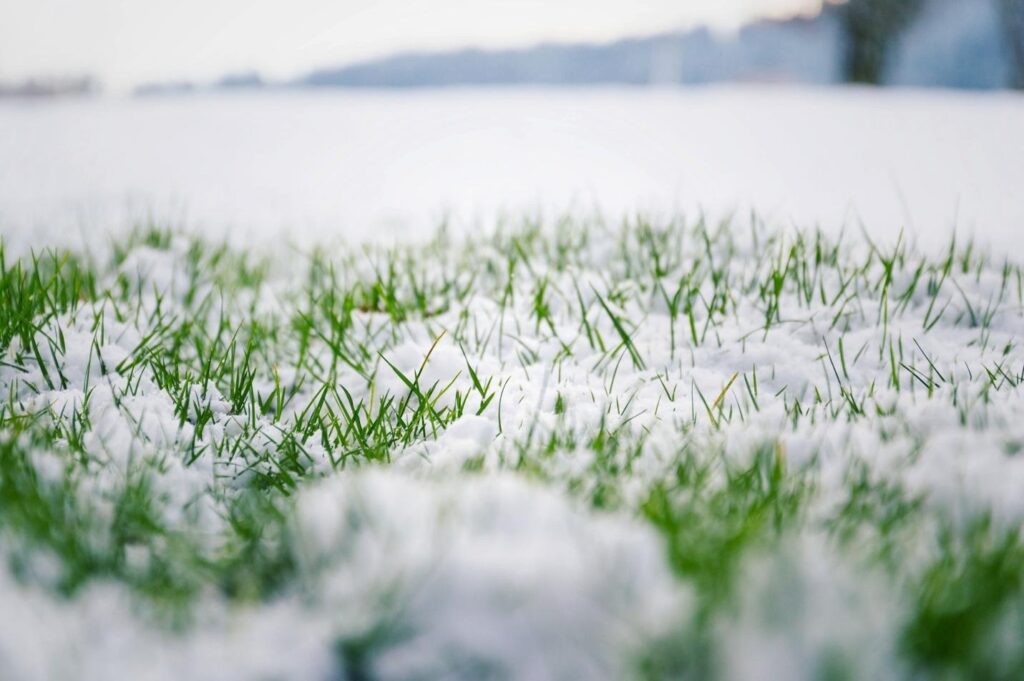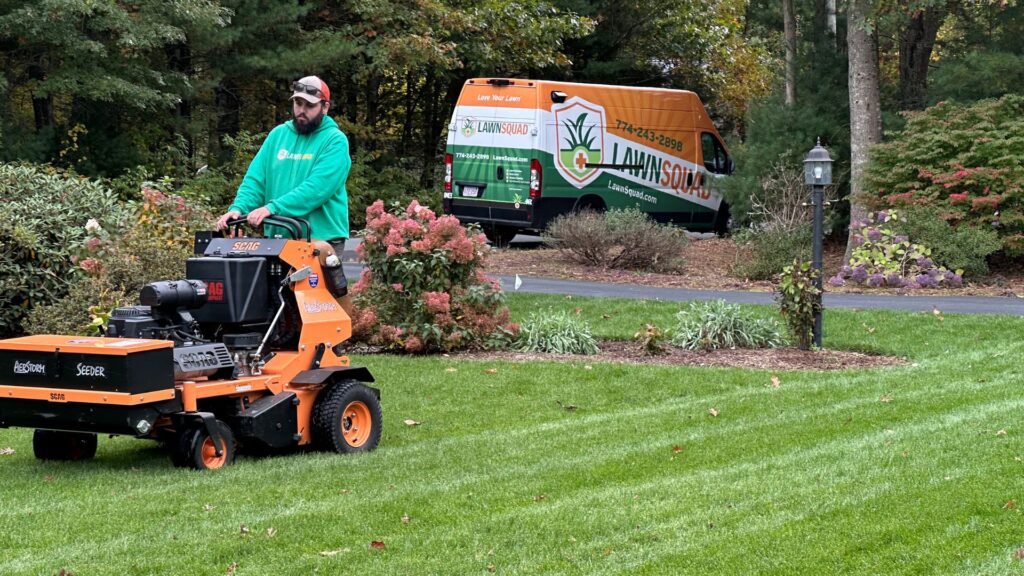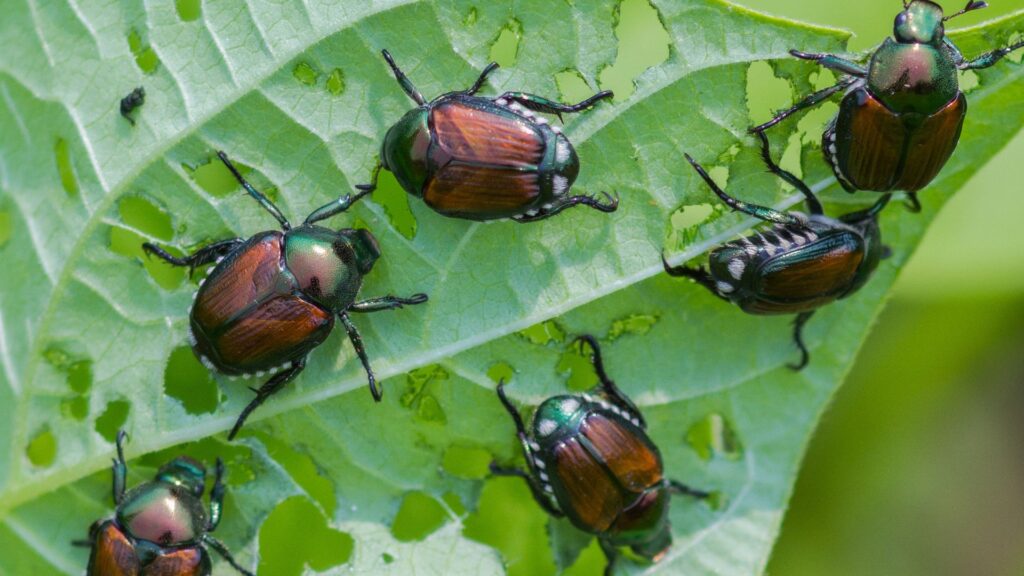A thick, green lawn is every homeowner’s dream. However, following outdated or incorrect lawn care advice can lead to frustration instead of results. Whether it’s watering habits, fertilization timing, or pest control, misinformation can cost you time and money. Here is what you need to improve the health of your lawn.
Myth 1: You Should Water Your Lawn Every Day
It’s a common belief that watering your lawn daily will keep it lush and green—but in reality, that can do more harm than good. Frequent, shallow watering encourages weak root systems, making your lawn more vulnerable to drought and disease.
In Aurora, most lawns begin to wake up from dormancy in late March or early April. That’s the perfect time to switch to deep, infrequent watering. This method encourages strong, deep roots that are better equipped to handle dry conditions.
Watering your lawn isn’t just about turning on the sprinklers. The timing, amount, and frequency all play a big role in your lawn’s health. Overwatering can cause root rot and fungal issues, while underwatering can lead to dry, patchy grass.
That’s why your lawn needs a watering schedule tailored to its specific needs—and we’re here to help with that. If your grass is already showing signs of stress or disease from improper watering, our Lawn Disease Control Services offer targeted treatments to restore your lawn’s health.
We treat and prevent common problems like brown patch, dollar spot, and root rot, all while helping you implement a watering routine that supports a healthy, resilient lawn—even through those dry Colorado spells.
Myth 2: Skipping Spring Fertilization Won’t Hurt Your Lawn
You might assume the grass will bounce back on its own after winter. However, skipping spring fertilization can set your lawn up for failure. Without essential nutrients, it may struggle with slow growth. Eventually, you will see thinning and increased weed invasion.
When you use our Fertilization & Weed Control Services, we can provide balanced, slow-release nutrients that feed your lawn over time. We also apply pre-emergent weed control. This can prevent weeds from sprouting before they become a problem. You will end up with a stronger, healthier lawn that naturally resists weeds and disease all season long.
Myth 3: Cutting Your Grass Short Means Less Mowing
Cutting your lawn down to the dirt may seem like an easy way to extend the time between mowing. Unfortunately, this weakens your grass. In turn, that makes it more prone to stress, disease, and weed growth.
Depending on the type of grass species, your lawn has specific cutting heights. Cool-season grasses like Kentucky bluegrass and fescue should generally be cut at 2.5 to 3.5 inches for best health and drought resistance. While taking out the lawn mower might seem simple, there’s more to it.
Our Lawn Disease Control Services can help reverse the damage even if your lawn has suffered from improper mowing. We target problem areas with specialized treatments. These plans strengthen root systems, improve resilience, and reduce stress-related disease outbreaks. When you combine that with proper mowing techniques, these treatments give you long-term lawn health.
Myth 4: Mowing Over Weeds Will Get Rid of Them
Some believe mowing over weeds will eliminate them, but the opposite is true. Mowing only spreads their seeds over more of your lawn.
If you have weeds, you don’t want to just treat the symptoms. You need to get to the root of the problem. Our Fertilization & Weed Control Services use a combination of pre-emergent and post-emergent treatments. This plan stops weeds before they start and eliminates existing weeds down to their roots. By strengthening your grass with proper fertilization, we also help it crowd out weeds naturally. As a result, that can prevent future infestations.
Myth 5: Lawn Diseases Only Happen in Hot, Humid Weather
Many people assume lawn diseases like fungus and mold are only a problem during the summer. In Aurora, lawn diseases like snow mold, red thread, and leaf spot can emerge in early spring when cool, damp conditions linger after snowmelt.
Our Lawn Disease Control Services include preventative and curative treatments designed to stop fungal growth before it damages your turf. We carefully assess your lawn’s condition. After that, we apply industry-leading fungicides that protect your grass throughout the changing seasons. With that, you can keep it strong and healthy all year long.
Myth 6: Fleas and Ticks Are Not a Problem in Your Lawn
Fleas and ticks are often associated with wooded areas, but they can thrive in any yard. If you have tall grass, shaded spots, or frequent pet activity, you could be at risk.
Our Flea & Tick Control Services provide seasonal treatments to create a protective barrier around your lawn. With that, we can reduce the risk of infestations. Unlike store-bought pesticides, our professional treatments are designed to target fleas and ticks at every stage of their life cycle. That gives you long-lasting protection for your family and pets.
Myth 7: Grass Clippings Cause Thatch Build-Up
Some homeowners believe leaving grass clippings behind after mowing leads to thatch. This is a thick, suffocating layer that stays on top of your lawn. For that reason, many people go through unnecessary effort to bag and remove clippings.
Grass clippings break down quickly. They act as a natural fertilizer, returning valuable nutrients to the soil. On the other hand, thatch build-up occurs when dead roots and stems accumulate. Our professional lawn care team will make sure thatch does not become a problem. We can prevent this issue by balancing fertilization and aeration strategies. That will keep your lawn breathable and healthy.
Myth 8: Any Fertilizer Will Do the Job
Not all fertilizers are created equal. Using the wrong type can do more harm than good. Many store-bought fertilizers contain fast-release formulas that create quick but unsustainable growth spurts. As a result, your lawn is more vulnerable to stress and disease.
Our Fertilization & Weed Control Services use professional-grade, slow-release formulas tailored to Aurora’s climate. These fertilizers gradually release nutrients. We can make sure it has steady growth without excessive stress. Additionally, we customize treatment schedules to align with your lawn’s specific needs.
Myth 9: DIY Lawn Care Is as Effective as Professional Services
With so many lawn care products available at home improvement stores, many homeowners believe they can achieve the same results as professional treatments. However, DIY solutions often lack the precision, quality, and effectiveness of professional services.
We take a scientific approach to lawn care. Our team understands Aurora’s unique soil conditions, climate challenges, and common lawn issues. That allows us to provide customized treatments that DIY solutions cannot match. Our expertise makes sure your lawn gets exactly what it needs.
Myth #10: Aeration Is Only for Golf Courses
Many homeowners believe lawn aeration is unnecessary unless they have a high-maintenance lawn like a golf course. However, compacted soil can be a problem for any yard. That can lead to poor root growth, water runoff, and patchy grass.
Aeration is needed to maintain a healthy, thriving lawn. Removing small plugs of soil allows water, oxygen, and nutrients to penetrate deeper into the root system. That gives you stronger, more resilient grass. While fall is often the best time to aerate cool-season grasses in Illinois, spring aeration can be helpful if your soil is compacted or your lawn experienced heavy snow or foot traffic over the winter.
Don’t let myths ruin your lawn this spring. Lawn Squad® delivers expert care backed by local knowledge and science-based treatments. From fertilization and aeration to disease and pest control, we’ll help you build a lawn you’re proud of. Contact us today for a free consultation and let’s get growing.






